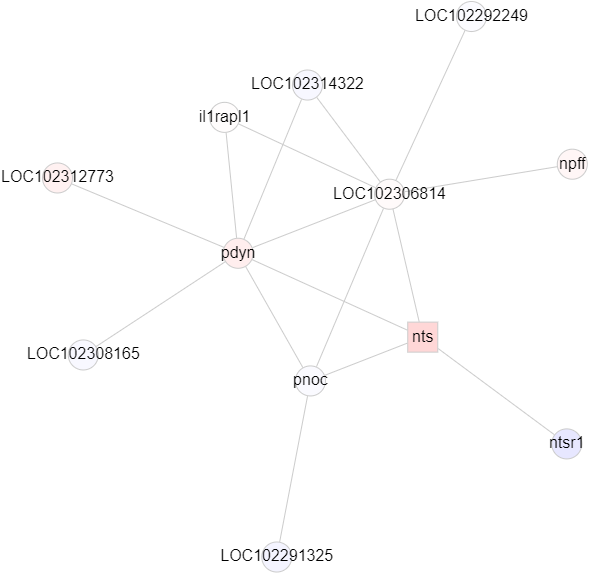Hey folks, my name is Gabe Preising and I’m a research assistant for Suzy Renn and Anna Ritz. I’ve always been a bit all over the place with my research interests, and because of that I’ve always been drawn to interdisciplinary research (either that or I’m just indecisive). I graduated from Reed this past May with a degree in Biology, my research interests including behavioral neuroscience, computational biology, and bioinformatics.
I spent my time in the Renn lab studying the African cichlid fish Astatotilapia burtoni. These fish are native to Lake Tanganyika, one of the African great lakes on the eastern side of the continent. They engage in complex social dynamics and because of that, people who study A. burtoni have historically studied the males in the context of dominance hierarchies and aggression. However, the Renn lab focuses their research on female behaviors, and in the case of my research, maternal care behavior. A. burtoni mothers engage in mouthbrooding, which is a ~2 week period where a mother will hold her developing offspring in her mouth. During this time, she will churn them around to circulate fresh air while simultaneously protecting them from predators. The really interesting part of this behavior though is that during mouthbrooding, a mother will forgo eating throughout the brooding period. This implies that somehow, a mother is making a trade-off where she puts the energetic needs of her offspring before her own.

The way signals from the brain can influence behavior and vice versa is fascinating to me, so I decided to do my senior thesis on the neural signals of mouthbrooding. As I was deciding on a project though, I became interested in bioinformatics and computational biology and wanted to tie each of these fields together. In Anna’s computational systems biology class, we learned about protein-protein interaction networks (i.e. interactomes) and how powerful they can be for investigating a variety of biological questions such as predicting disease genes. We also learned about how you could weight interactomes with external data to alter properties of the network (depending on what you’re doing). So in one sentence, my thesis (and current research) is: use a protein-protein interactome to figure out what’s going on in the brains of mouthbrooding fish.
Since there is currently no interactome for A. burtoni, I made my own from an existing zebrafish interactome. To do this, I took advantage of two publicly available resources: orthologous relationships [1] and a zebrafish interactome [2]. Orthologous genes are related genes in different species that originated from a common ancestor. Using the program OrthoFinder [3], I generated orthologs between zebrafish and A. burtoni. I then created new edges between all of the corresponding orthologs for the pair of nodes in each zebrafish edge. Finally, I weighted the network with gene expression data from the brain such that redder nodes have a higher expression level in brooding fish and bluer nodes have a lower expression level. The following subnetwork focuses on neurotensin, a differentially upregulated gene in brooding fish.

Neurotensin is involved with both feeding and parental care, and seeing it connected to other neuropeptides like prodynorphin (pdyn) tells me that I mapped everything correctly. I’m going to keep refining my network in the coming weeks and try a different method of constructing it but I’m excited to have a usable interactome finally. Future goals include looking into NetworkX algorithms to run to find clusters of differentially expressed genes.
References:
[1] Smedley, D., Haider, S., Ballester, B., Holland, R., London, D., Thorisson, G., & Kasprzyk, A. (2009). BioMart–biological queries made easy. BMC genomics, 10(1), 22.
[2] Ogris, C., Guala, D., Kaduk, M., & Sonnhammer, E. L. (2018). FunCoup 4: new species, data, and visualization. Nucleic acids research, 46(D1), D601-D607.
[3] Emms, D. M., & Kelly, S. (2019). OrthoFinder: phylogenetic orthology inference for comparative genomics. Genome biology, 20(1), 1-14.
